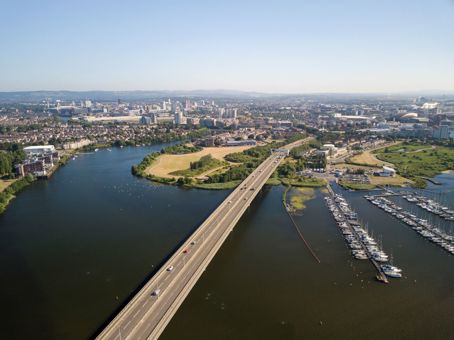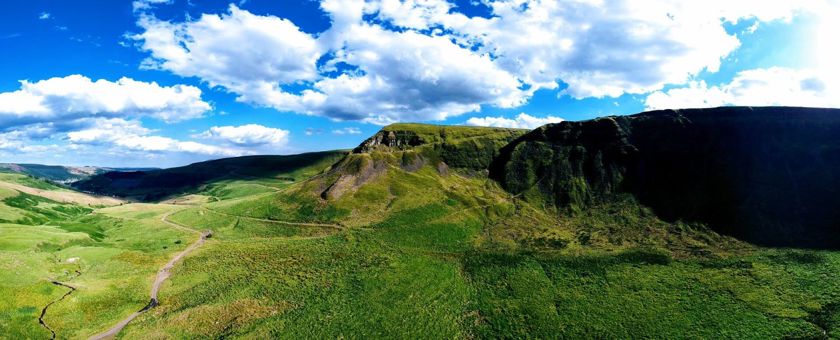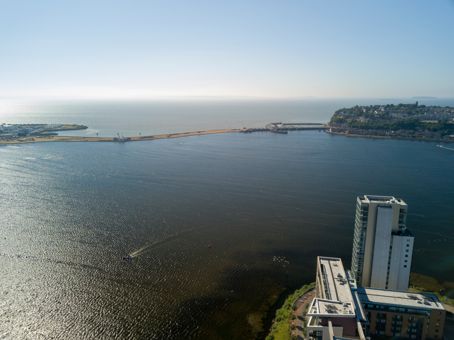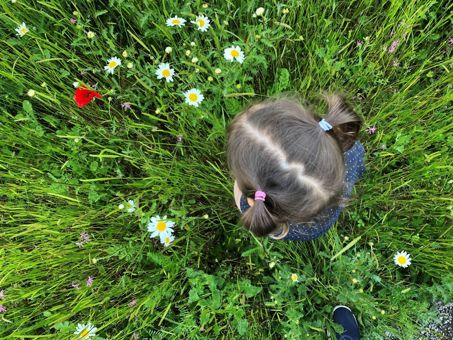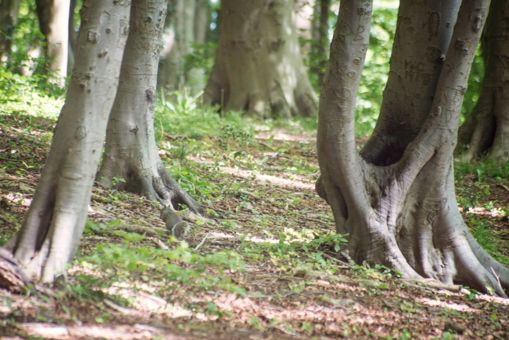Connecting people with nature
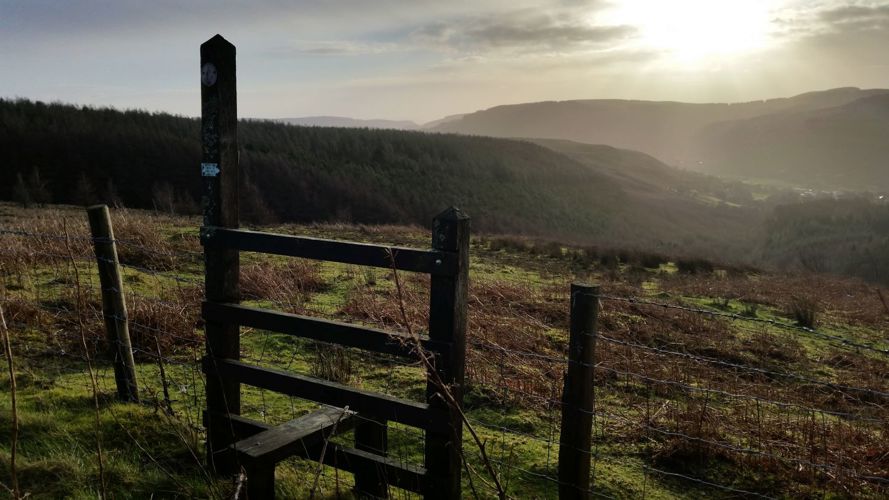
Why this theme?
Inspired by increased public awareness, people worldwide are showing their concern for the natural environment, urging governments at all levels to meet the challenges posed by accelerating climate change and ecological collapse.
Responding to the groundswell of opinion among people of all ages in Wales, Welsh Government Environment Minister Lesley Griffiths declared a climate emergency in April 2019, saying she hoped it would “trigger a wave of action at home and internationally, from our own communities, businesses and organisations to parliaments and governments around the world.” Sir David Henshaw, chairman of Natural Resources Wales (NRW), added:
“The climate emergency declaration is a critical challenge to us all and should acknowledge the wider environmental emergency, particularly that of biodiversity loss.”
Changes to our climate and weather patterns will have a significant impact on the well-being of current and future generations. Increasing temperatures and extreme weather events caused by climate change are, right now, putting pressure on ecosystems, infrastructure, the built environment, our unique landscape and our cultural heritage, all of which contribute to social, economic and ecological resilience.

To date, 3 of the 5 local authorities in South Central have also declared a climate emergency, and 2 out of the 5 local authorities have declared a nature emergency. Bannau Brycheiniog National Park Authority acknowledges both emergencies in their management plan ‘Y Bannau - The Future’. Whilst this demonstrates a desire to do more, and quickly, it is clear there is still a way to go.
The Well-being of Future Generations (Wales) Act 2015 is an example of policy and legislation aimed at having a positive effect on our day-to-day and civic life.
This all starts with an appreciation and understanding of the benefits and services that the natural environment presents us. Our aim is for the natural world to be valued not only by local communities, but also planners and other decision-makers.
Being the most densely populated part of Wales, home to 29% of the country’s population and 18% of its urban space, South Central Wales is also an area renowned for its outstanding natural beauty. It is a place where urban and rural landscapes rub shoulders in remarkable proximity, probably more so than in any other part of Britain, let alone Wales. With that in mind, encouraging people to interact more with the natural world seems entirely, for want of a better word, natural.
There is a pressing need to ensure we maintain and improve people’s connection to, and appreciation of, the natural world. Unfortunately, it is all too easy for communities to become physically and mentally disconnected from nature. Expansive grey urban infrastructure can often, quite literally, act as a barrier.
Over the coming years, significant urban growth is scheduled to take place across South Central Wales. It is our vision that people are surrounded by good quality environment, at the same time protecting, managing and maintaining our unique urban/rural blend.
By enhancing our connection with nature, we can improve not only our general health and well-being but also our knowledge of, and ability to address, environmental issues more commonly associated with urban landscapes, for instance flooding (surface water and rivers) and air quality.
Our Area Statement will set out evidence about our natural resources and the benefits and services they can provide. By improving people’s understanding of these benefits and services (e.g. promoting the role of green infrastructure in a resilient urban environment), together we can start to address many of the national challenges and opportunities in our day-to-day decision-making, including:
- Supporting preventative approaches to health outcomes, with particular focus on the key public health issues of transport related air and noise pollution, tackling physical inactivity and improving mental health
- Reversing the decline in biodiversity
- Reducing the risk of flooding and making communities and businesses more resilient
- Supporting climate change mitigation and adaptation through ecosystem approaches
- Reducing noise pollution and pollution levels in our air, and enhancing air quality
- Improving the quality, and ensuring the quantity, of our water
- Taking action to reduce the pressures on our natural resources, for instance through embracing renewable energies or encouraging people to use resources more efficiently
- Supporting action to tackle health and economic inequalities

What would success look like?
Success would be:
- The Area Statement providing a local evidence base to inform delivery mechanisms, ensuring the sustainable management of natural resources
- The Welsh Government’s Natural Resources Policy (NRP) of 2017 being implemented locally, drawing on the evidence base put in place through our Ecosystem Profiles (see our ‘Building resilient ecosystems’ theme) to ensure that our natural resources, and the benefits they provide for well-being and economic prosperity, are valued in decision-making
- All public bodies demonstrating recognition of the opportunities that our natural resources provide for well-being in their own plans and strategies
- The Area Statement drives forward our adaptation activity across Wales, delivering the actions in Prosperity for All: A Climate Conscious Wales
Healthy, resilient ecosystems provide us with essential and intrinsic benefits to our lives and well-being, including the ability of communities and businesses to adapt to climate change. The South Central Wales Ecosystem Profiles, being developed under our ‘Building resilient ecosystems’ theme, will be used to better understand the current status of our ecosystems, identifying opportunities for improving ecosystem health and building resilience.
Our ‘Connecting people with nature’ theme explores how the benefits provided by resilient ecosystems are valued, seeking to integrate this information into the decision-making process (ensuring that ecosystem health is regarded as a priority) by recognising its contribution to the well-being of communities.
Combined, these two themes provide the framework for the delivery of Sustainable Management of Natural Resources (SMNR), underpinning the three other themes that make up the Area Statement (Working with water, Improving our health and Improving our air quality). Through this framework, we will set out underlying principles to ensure that, when addressing national opportunities and challenges, the actions identified maintain and enhance ecosystem resilience to deliver benefits aimed at improving our well-being.
Who have we worked with to date?
We have liaised with a range of organisations to identify mechanisms that will help deliver the sustainable management of natural resources (SMNR). While some of these are set out in the Environment Act, others are more local, involving new ways of working.
Through our engagement, we have learned that stakeholders will look to the Area Statement as a central evidence base to inform key delivery mechanisms, ensuring that natural resources (and the benefits they provide) are appropriately valued within the decision-making process.
We aim to demonstrate leadership by being transparent, showing how we have used the Area Statement to inform NRW’s own work, outlining what we consider to be the best ways of pursuing sustainable management and working in partnership with others. We are exploring new ways of working with partners, always with a view to building the resilience of our ecosystems and enhancing the benefits they provide.
We will continue to engage with a wide range of stakeholders to identify nature-based solutions that address the priorities, risks and opportunities that we have identified so far, contributing ultimately to the delivery of the NRP. We are treading carefully to make sure that we don’t create new mechanisms where they already exist. We will also prioritise decision-making processes to which we can add value by promoting the role of nature-based solutions.

What are the next steps?
The Area Statement will ensure that the benefits and opportunities that our natural resources provide are understood, and that this shared vision in the natural environment is absorbed into the decision-making process. Ways of doing this include:
- Through the implementation of the Sustainable Land Management scheme, the Welsh Government, Natural Resources Wales and others will take into account the local evidence base provided by the Area Statement
- Through the development of green infrastructure assessments, local authorities, NRW and others will ensure that the Area Statement provides a local evidence base for ecological networks, with NRW also working with local authorities to develop a green infrastructure data inventory across South Central Wales
- By providing a local evidence base to support strategic environmental and health impact assessments
- By providing the evidence needed to support public body biodiversity forward plans and assisting public bodies in delivering their Section 6 duty, ensuring that ecosystem resilience is considered at an appropriate scale
- Making sure that the natural environment, and the role that it plays in well-being and economic prosperity (including adaptation to climate change), will be fully valued and integrated into the work of Public Service Boards and others
- Making sure that key local and regional plans, such as the Valleys Regional Park, also deliver against the main challenges and opportunities identified through the Area Statement
How does what we’ve proposed deliver Sustainable Management of Natural Resources (SMNR)?
The NRP sets out the requirement for resilient ecological networks as a priority action, to be taken forward through Area Statements. In order to fulfil this, Area Statements must support new ways of working to value the natural environment, build equitable partnerships and put the environment at the heart of the decision-making process. We have world-leading legislation in Wales. However, that means nothing if nobody understands it, or won’t use it to inform or make decisions.
Area Statements will provide the evidence to support key delivery mechanisms. Some are set out in the Environment Act and must have regard to Area Statements. These include Local Development Plans, Public Service Board Well-being Assessments, and National Park and Areas of Outstanding Natural Beauty (AONB) plans. Other mechanisms (such as public body biodiversity forward plans and water company plans) will be supported by Area Statements through Section 6 duty. The Area Statement will also provide key evidence to shape other mechanisms such as local authority green infrastructure assessments, Sustainable Land Management scheme and climate change adaption strategies.
This theme, in tandem with the first of the five themes which make up the Area Statement (Building resilient ecosystems), provides the mechanism through which all decisions can be run to ensure delivery of Sustainable Management of Natural Resources.
How can people get involved?
In South Central Wales, we are committed to working in an open and transparent way. With that in mind, we want to encourage people to connect with nature. The Area Statements process allows us to establish new ways of working which will be identified as we develop the next steps. Should you wish to find out more, please don't hesitate to email us at southcentral.as@cyfoethnaturiolcymru.gov.uk

